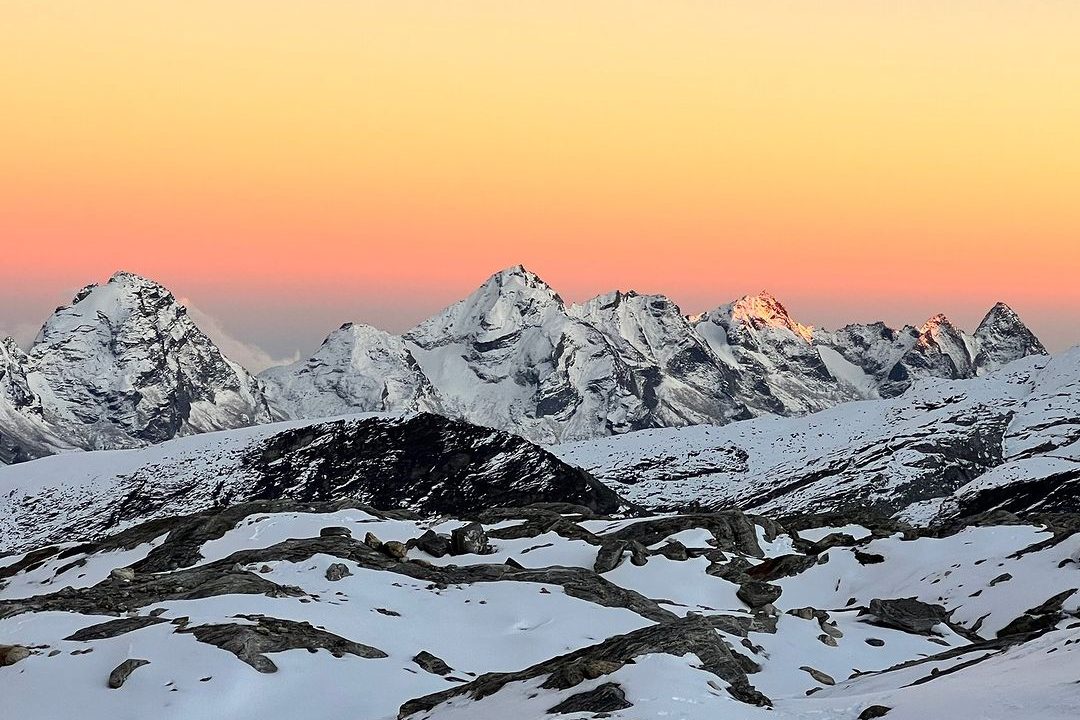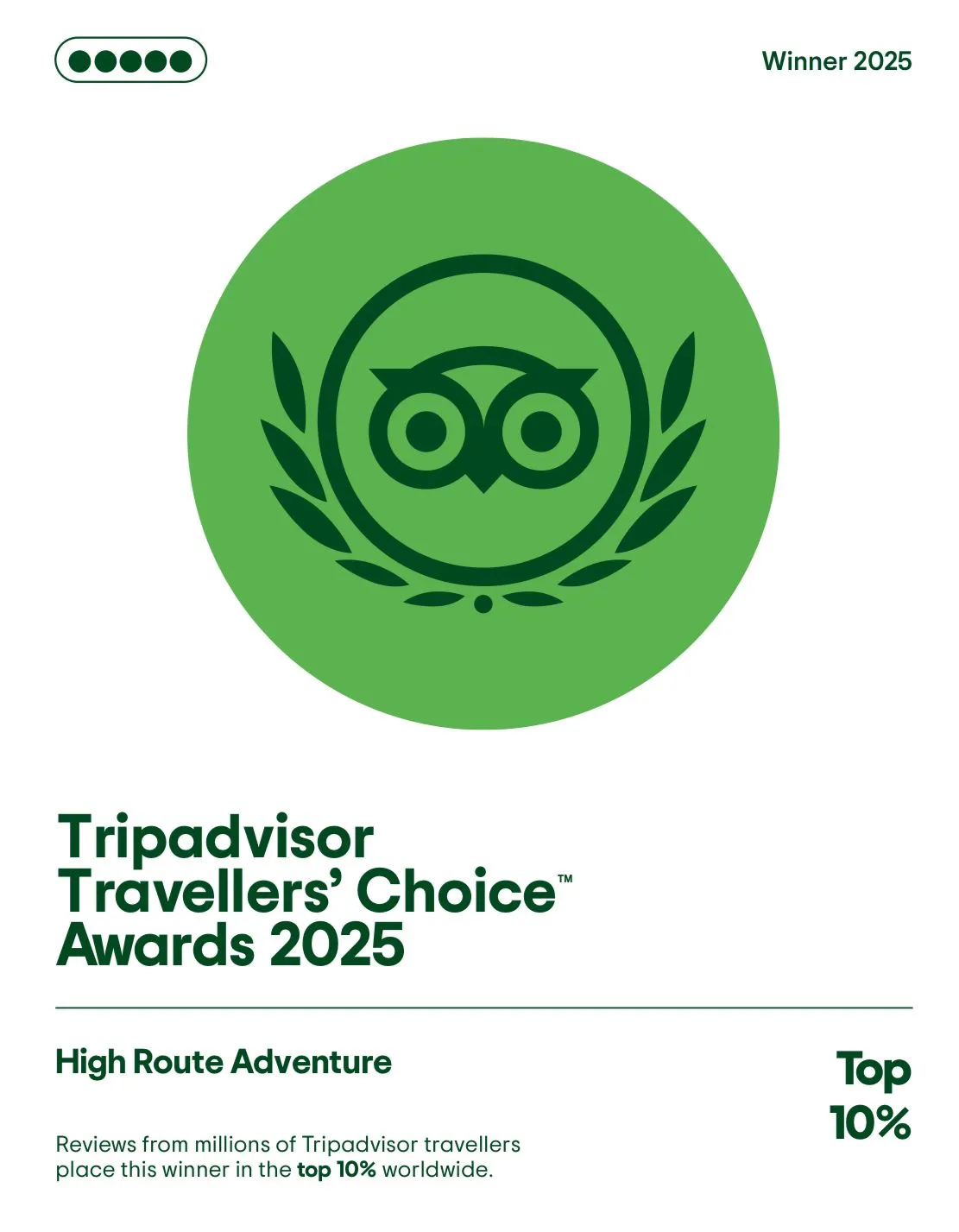Best Time to Climb Mera Peak

Mera Peak is like a towering giant in eastern Nepal’s Hinku Valley, standing tall with its three summits: Mera South, Mera North, and Mera Central. Among them all, Mercent Central is known to be the favorite for climbers due to the fact that it provides the easiest way to the top. In 1953, the daring combo of Jimmy Roberts and Sen Tenzing became the only people who had ever reached its peak.
This peak is situated within the magnificence of the Makalu-Barun National Park, which is the highest trekking peak in Nepal at a height of 6476 meters. While the high elevation sets Mera Peak apart from other peaks, it is less challenging in the technical skills department. Thus, it’s great for new trekkers venturing into mountaineering or a seasoned climber seeking a fresh experience.
Another inspiring thing that one has to deal with while climbing Mera Peak is the view it provides. From its summit, you can feast your eyes on five of the world’s highest peaks, all soaring above 8,000 meters: Everest, Lhotse, Cho Oyu, Makalu, and Kanchenjunga mountains.
High Route Adventure organizes the 18-day itinerary of the Mera Peak Expedition, fully covering your arrival and departure in Kathmandu. Also, you will have a training programme at Khare on the 10th day, which is an important day for acclimatization. The training is regarded as a prerequisite for novice climbers preparing for the summit push. You will learn basic mountaineering skills, such as how to fix the ropes and use ice axes, crampons, etc., from our professional mountaineering Guides.
Nonetheless, following the given itinerary may not be able to meet your requirements. With High Route Adventure, the agenda is yours and can be easily adapted to fit your wishes precisely.
To know the best time, you should first know the weather and temperature conditions in different seasons. Keep on reading to know more about each season.
Table of Contents
Autumn (September to November)
If you are enthusiastic about this great climbing, the best time for this adventure is during the autumn months. During these seasons, the weather is appreciably friendly, and therefore, it is comfortable to climb Mera Peak. Most travelers prefer to do this climbing in Autumn, and this peak sees the highest number of climbers in this month.
Benefits of climbing Mera Peak in the Autumn Seasons
- Clear skies and minimal precipitation with stable weather are the general outcomes of Autumn in the Himalayas during this season. The outcomes of this are exceptionally good for climbing the towering peak with excellent visibility.
- The azure blue skies provide an unbeatable panoramic view of the mountains as far as the eyes can see, including the distant Everest and the splendid autumn color sceneries, which is against a backdrop of snow-capped mountains.
- Such a comfortable daytime temperature and comparatively cool nights improve trekking and climbing in general and decrease the possibility of hitting heat exhaustion or cold-related illness.
- Ski routes are usually devoid of snow and ice, selecting high mountain passes that add to the comfort of a pilgrim and enhance the safety of climbers.
- Autumn coincides with the festival season in Nepal, namely Dashain, and Tihar, which is also the perfect time to have a taste of the culture and traditions that people follow along the trek.
- Tea houses and lodges along the route are fully operational and well-stocked during the autumn season, providing comfortable accommodations and amenities for climbers.
Disadvantage of climbing Mera Peak in Autumn Seasons
- Due to peak season, you can find the crowd on the trail path and at tea houses.
- Due to the high demand for climbing by trekkers in this season, the cost of the climbing permit and package remains high.
- Due to the festive season, the cost of flight tickets remains high.
- Difficulty in getting the permit in time in peak season; therefore, you need to book climbing permits very early.
Spring (March to May)
Springtime, usually from March to May, presents the climbers with scenery rich in colors as nature awakes from winter sleep. With rhododendrons blossoming around and, the hillsides getting bright shades of pink, red, and white, lush greenery carpeting the valleys, each step on our way up the mighty peak is a manifestation of the splendor of the season.
The fresh mountain air is permeated with the sweet scents of blooms, energizing climbers as they proceed through greenish forests and across the alpine meadows. The weather is becoming more and more stable and clear, and climbers are welcomed with unobstructed views of the colossal towers at the horizon that are punctuated by the peaks. In front of the clear blue sky, Everest, Lhotse, Cho Oyu, and Makalu show up in all their magnificence, exciting awe and respect in equal measure.
Benefits of climbing Mera Peak in Spring
- Spring is a time of renewal in the mountains, with blooming flowers, lush greenery, and colorful rhodendron forests adorning the landscape. Climbers are treated to a picturesque backdrop of vibrant colors and natural beauty along the trekking route.
- Spring brings milder temperatures compared to the extremes of winter and summer, creating comfortable conditions for trekking and climbing. Moderate temperatures make the ascent more enjoyable and reduce the risk of cold-related illnesses.
- While spring is a popular season for trekking and climbing in the Himalayas, it typically sees fewer climbers compared to the peak seasons of Autumn.
- Spring offers longer daylight hours compared to winter, providing climbers with more time to ascend and descend safely.
- In the spring, you can have celebrations with local people at festivals such as Holi (the festival of colors) and Nepali New Year (Nepal Sambat), adding cultural vibrancy to the trekking experience.
Disadvantage of climbing Mera Peak Spring
- Even though the weather remains pleasant, the chances of sudden drastic change in the weather are still possible.
- Due to the peak seasons and high demand, it will be difficult to get accommodation in tea houses if not booked early.
- The climbing package and the climbing permit cost are higher than the off-season.
- If you prefer peace and quiet, the high number of visitors on the trail and at tea houses during peak seasons might be bothersome. The crowded paths and viewpoints can detract from the serene experience you seek in the mountains.
Summer/Monsoon (June to August)
Climbing the Mera Peak in the summer is possible, but very few travelers decide to climb during this month. Considering the risk factors, we suggest you do not climb during the summer/monsoon season. However, during the month of June, it receives less rainfall than the July and August.
So climbing in June will be the best idea. But before heading into the summer season, it’s extremely important to know about the weather forecast. You need to make a plan and prepare in such a way that the rain will not ruin your journey.
Benefits of climbing Mera Peak in Summer/Monsoon
- Even though it’s extremely challenging walking on the slippery and muddy trail path, overcoming this obstacle adds an extra element of adventure to your journey.
- In the rainy season, rivers and streams get super busy, and watching them is even more exciting than usual. They’re full of energy, rushing and splashing around, creating a really cool sight along the way.
- The cost of the climbing permit and accommodation is lower than in other seasons.
- Monsoon means the off-seasons, so there will be very few travelers heading for the summit in this season. Therefore, this makes the trail path remain quiet, and you can enjoy a peaceful experience.
- The long daytime will be helpful to reach the destination in time.
Disadvantage of climbing Mera Peak Summer/Monsoon
- The frequent rainfall might obstruct you from getting a panoramic view of the mountains and surroundings.
- Heavy rain means there will be a high chance of natural disasters like floods and landslides.
- Due to rainfall, the trail path will be muddy and slippery, which can increase the chance of getting injured.
- Climbers may encounter blood-sucking parasites like leeches and mosquitoes.
- There might be a limited number of tea houses due to off-seasons.
- You need to pack your clothing items and waterproof gear; if you fail to do so, you might fall sick due to exposure to wetness.
Winter (December to February)
Climbing the Mera Peak in the winter is possible, but it is equally challenging. In winter, at the high altitude of the mera peak, the temperature goes below the freezing point. The main challenge that most climbers need to face is heavy snowfall.
The extreme cold temperature below the freezing point and heavy snowfall create difficulty in navigating. So, to deal with the extremely cold temperature, you need to have proper clothing and gear equipment.
Benefits of climbing Mera Peak in Winter
- Very few climbers head for the Mera Peak in the winter season, so you can find the climbing path with a quieter atmosphere.
- The climbing cost of the Mera Peak will be lower due to affordable flight costs.
- It will be easier to find accommodation due to the small number of fellow trekkers and less congestion in the teahouse.
- If the weather remains clear, then you can see a crystal clear view of the mountains and surroundings than any other season. Making you feel like watching in HD.
- In the winter seasons, most of the trekking agencies will make an offer like a last-minute deal, heavy discount on the package, winter package, etc. Also, the cost of the climbing permit will be lower in this season compared to other seasons.
Disadvantage of climbing Mera Peak in Winter
- To deal with the extremely cold temperature, you need to prepare yourself with extra heavy clothes and gear.
- The heavy snowfall in the trail path will drain your energy and require extra effort.
- The chances of getting sick from the extreme cold temperature are higher.
- In extremely cold temperatures, the formation of fog might block the view, and the chances of getting a flight delay remain higher.
- Also, the chances of avalanches remain high during the winter seasons.
- In case of emergency, if the visibility remains poor, helicopter evacuation on time might not be possible.
- Also, the short daytime might add difficulties in reaching the destination in time.
Related article:
Conclusion
Climbing the Mera peak is possible throughout the year; however, each season has its pros and cons. Figuring out what comfort and challenge you like, you can choose the time to climb the Mera Peak. Whether you decide to make the ascent in the soft tones of spring, the chilly air of fall, the warmth of summer, or the quaint landscape of white in winter, Mera Peak has an exciting journey that awaits you to add to your memory box.
This charismatic mountain lures adventurers to visit the Himalayas with its astonishing beauty and mesmerizing sky, making them take away with it. While each season has its own special attributes, yanking the opportunity of forever imprinting upon your mind the sight of vast scenic views, the pleasure of overwhelming joy, and the happiness of lasting recollection which can last all life-long.
Plan Your Trip
Talk with Our Local Travel Specialist Who Can Help Organize Your Trip









